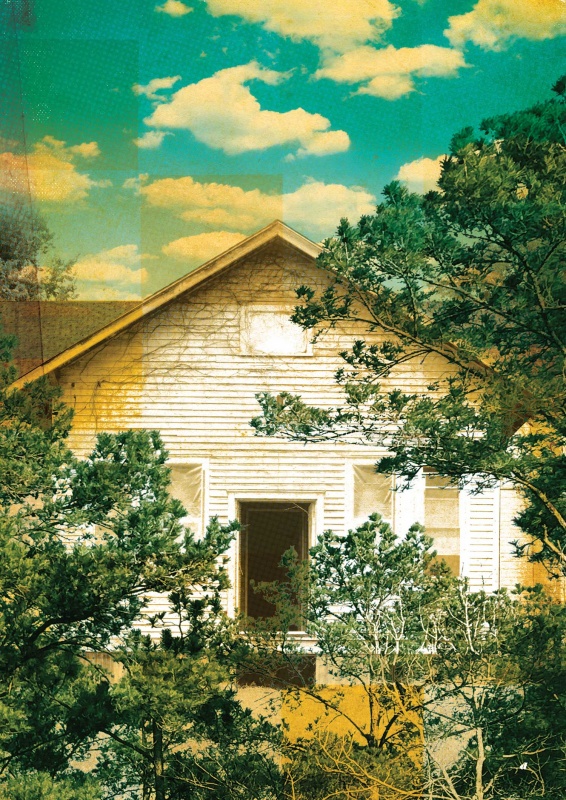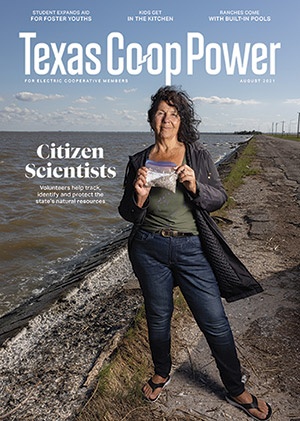When I was a child in 1968, my father and I visited the abandoned schoolyard of our Cherokee County community of Green Chapel. Near the collapsing schoolhouse, we found a timeworn and rusty iron swingset laying on its side. Even now, I can imagine children running across the playground, safely insulated from the cares of the world.
That schoolhouse, tucked into the East Texas Piney Woods off Cary Lake Road, had been the beneficiary of funds from the Julius Rosenwald Fund, a foundation that helped schools in African American communities.
The school sat about 9 miles west of Jacksonville in a community of impoverished African American farming families who lived more or less self-sufficiently.
Cherokee County records indicate the Green Chapel community’s church, Brisby Chapel, was founded December 11, 1881. As was true in many rural African American communities, the church building was where the community met for worship on Sunday and held school Monday through Friday. Eventually they built a one-room schoolhouse.
Times were hard, and these farming families—usually with several children—did not have money to repair the school’s leaking roof, holes in the floor and broken windowpanes. It was a challenge just to purchase books for the students. In the early 1920s, the community decided one possible solution was to seek funding for a school. They targeted the Julius Rosenwald Fund, established in 1917 by the philanthropist and businessman of the same name who was one of the owners of Sears, Roebuck and Co.
Rosenwald partnered with African American educator and activist Booker T. Washington to create the fund for the chief purpose of improving education for Black people. Between 1910 and 1930, the fund contributed to more than 5,000 buildings for Black students across 15 Southern states. Local school boards had to approve the new schools first, then the communities had to raise matching funds and assist with the construction labor.
The schools created memories for those who attended. Clara Brown, 96, a former Green Chapel student, says, “We’d pack our lunch of biscuit and ribbon cane syrup. Or cornbread dressing in a jar. Put it in a syrup bucket or shoebox and head off to school. Then we’d cut through the woods, around our neighbor’s fields, being real careful not to step on his crop.”
When I complained about my own school, my father often reminded me “to jus’ be thankful” because he had to walk 2 miles to Green Chapel school, even when it snowed.
We confirmed that distance when we found a cluster of sagging houses, one of which belonged to his family, about 2 miles northwest of the school.
The then-crumbling schoolhouse that Clara Brown attended at Green Chapel was a white, two-room building. The lower grades were on the left and the upper grades on the right, and each room had a wood-burning stove for heat. When the children completed the eight grades taught in the country school, they faced the dilemma of deciding which Black high school they would attend.
“My ninth grade year, I went to Jacksonville ISD. Then the next year, I went to Neches ISD,” says Ollie Chandler, a former Green Chapel student.
“The teachers either stayed with a family in the community, or they rented themselves a house in the area. Keep teachers from driving back and forth,” Brown said. “Lots of days, we missed school because we had to gather the crops, then you’d get behind in ya classwork.”
After farming families moved away from the community in the 1950s, the Green Chapel school was consolidated with Jacksonville ISD.
When my husband and I visited the schoolyard with our son in 2020, untrammeled foliage and small trees covered everything. The chia-chia calls of birds interrupted the quiet of the woods. My heart shrank because I couldn’t see that anything remained of the building. But as I turned to leave, I stumbled upon a piece of concrete. Kicking the leaves off, I discovered it was the school’s old well cover. And there was still one leg of the swingset. I quickly yanked out my phone and snapped pictures.
After leaving the peaceful countryside that day, I recalled how my older relatives often reminisced about the “village feeling” they had in those Rosenwald community schools.
I left smiling, thinking of how those brave school-age children and their families persevered in receiving an education at Green Chapel—even way out there.


